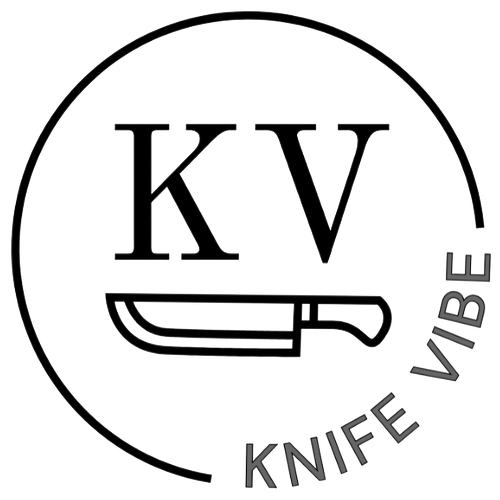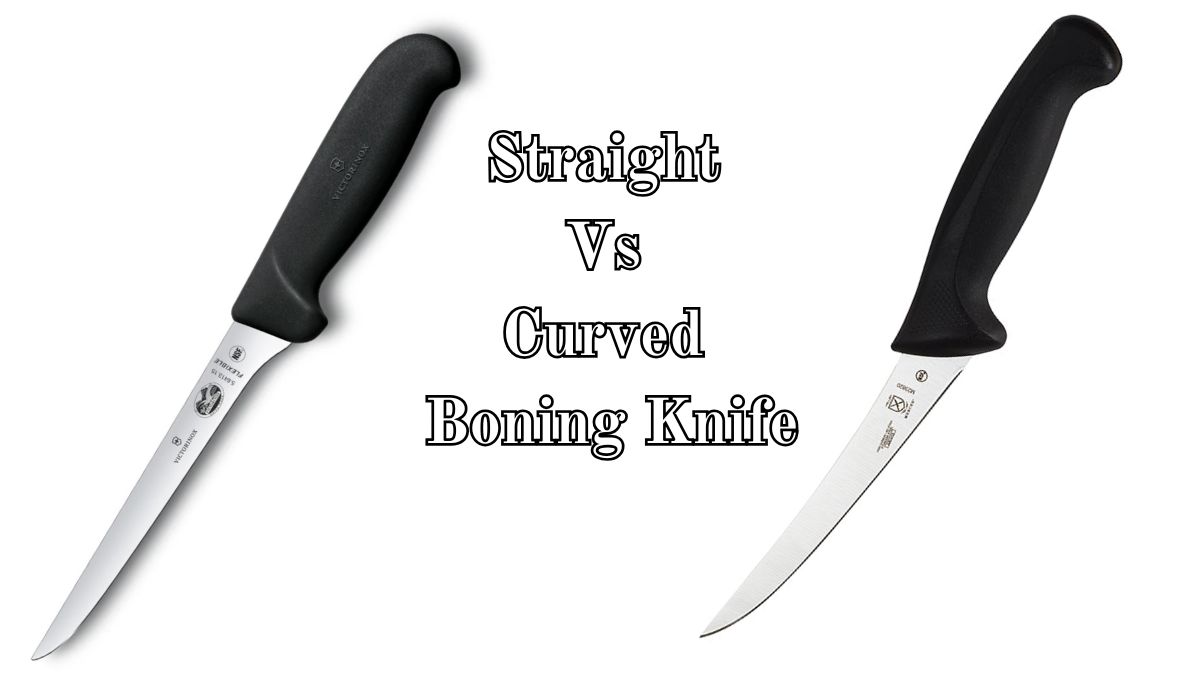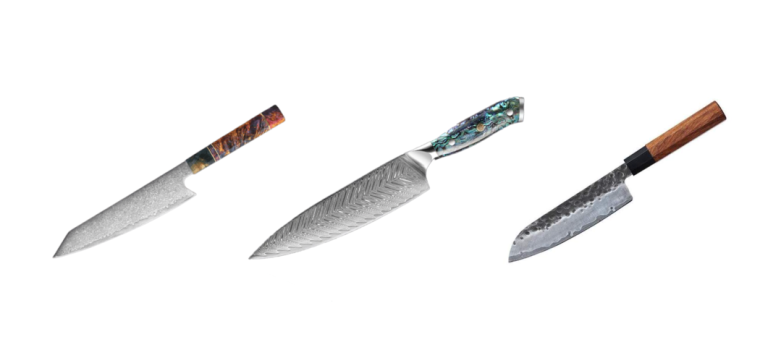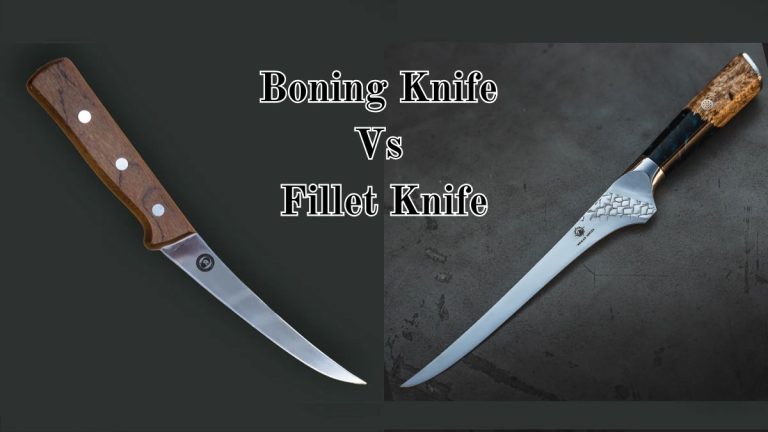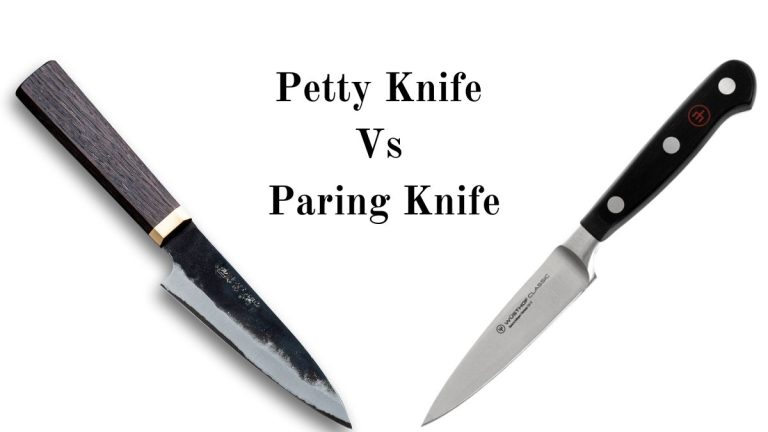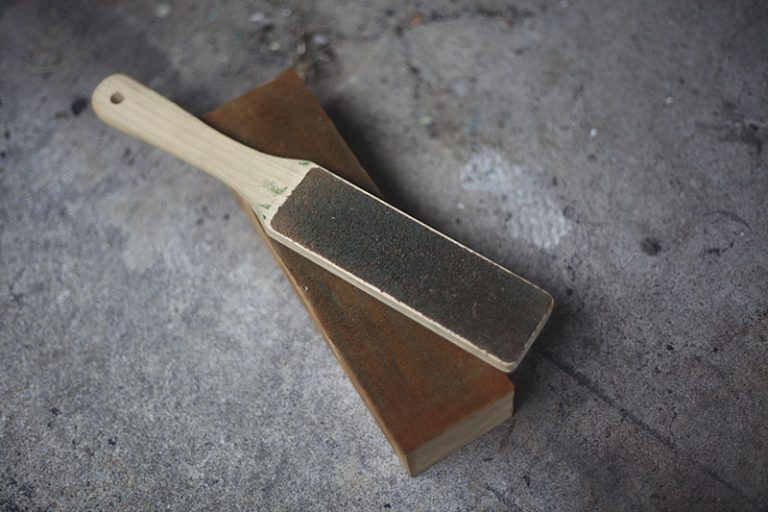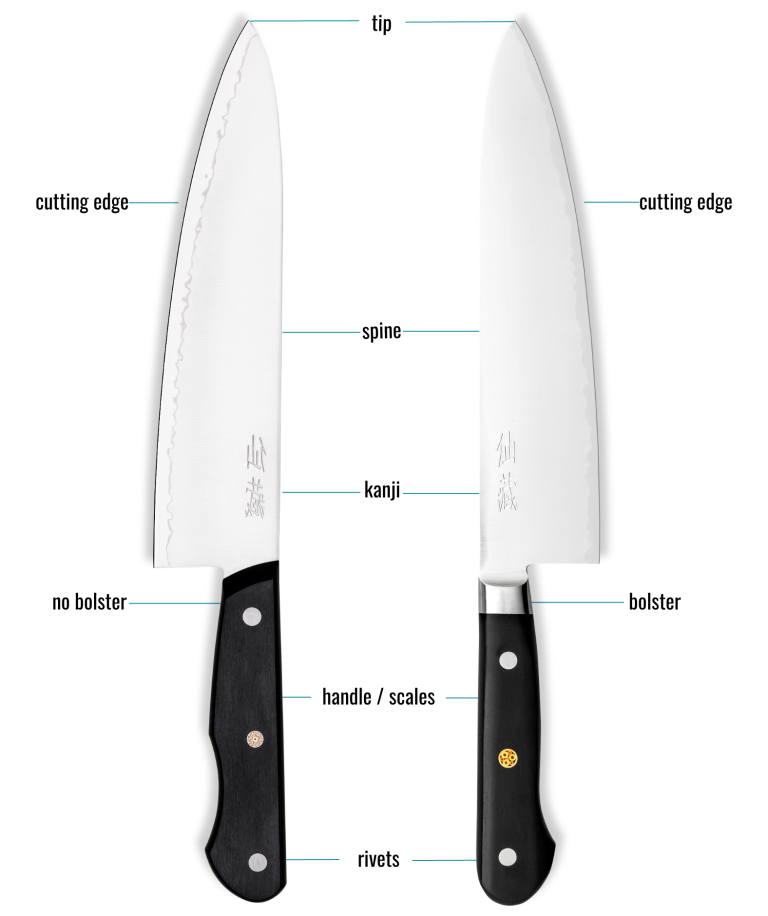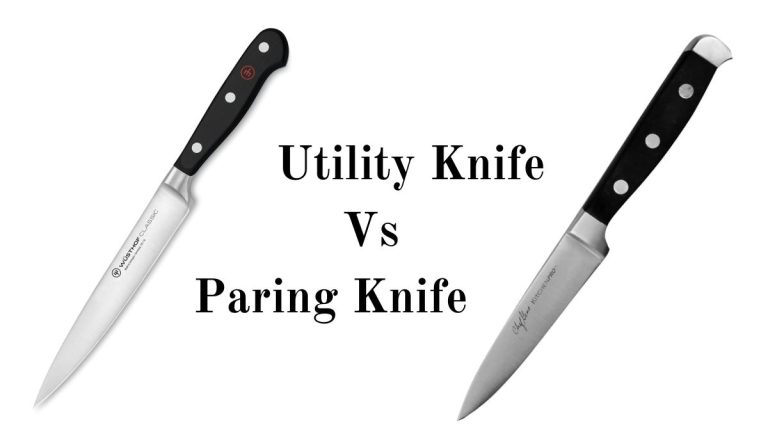Curved Vs Straight Boning Knife: Which Is Best for Your Kitchen?
Choosing between a curved and straight boning knife can be tough. Each has its own strengths and weaknesses.
Boning knives are essential tools for anyone who works with meat. Whether you are a professional chef or a home cook, the right knife can make a big difference. A curved boning knife offers flexibility and ease when cutting through joints and around bones.
On the other hand, a straight boning knife provides precision and control for clean cuts. Understanding the differences between these two types can help you select the perfect tool for your needs. This blog will explore the pros and cons of each type, helping you make an informed decision. Read on to find out which knife is best for your kitchen.
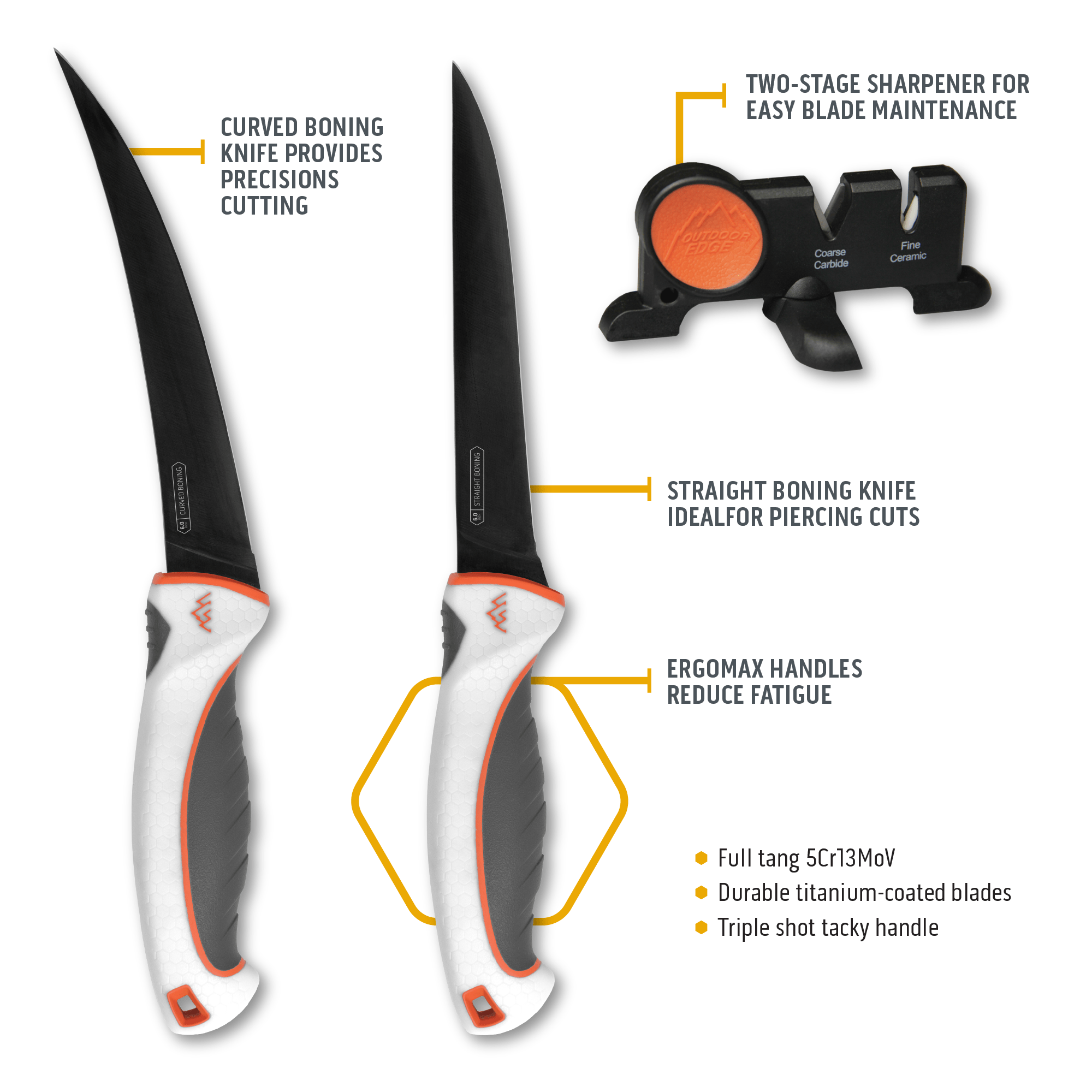
Credit: www.outdooredge.com
Introduction To Boning Knives
Boning knives are essential in the kitchen. They help remove bones from meat and fish. Their design allows for precision and ease.
Purpose Of Boning Knives
The primary purpose of a boning knife is to separate meat from bones. These knives are sharp and flexible. This makes them perfect for intricate cuts.
| Purpose | Description |
|---|---|
| Removing Bones | The thin blade slides easily along bones. |
| Trimming Fat | Helps in removing unwanted fat from meat. |
| Filleting Fish | Makes it easy to separate fish fillets. |
Types Of Boning Knives
Boning knives come in two main types: curved and straight. Each has unique advantages.
- Curved Boning Knife: Ideal for delicate cuts. The curved blade allows for better maneuverability. Perfect for poultry and fish.
- Straight Boning Knife: Better for tougher cuts. The straight blade provides more control. Best for beef and pork.
Choosing the right boning knife depends on the type of meat you work with most. Both types offer precision and control for various tasks.
Design Differences
Understanding the design differences between curved and straight boning knives is essential. Each design serves a specific purpose and can affect your cutting technique. Let’s explore the unique features of each type.
Curved Boning Knife
The curved boning knife has a blade that arches upward. This curve helps in making precise cuts around bones and joints. The design allows for better maneuverability, especially when working with poultry and fish. The curved blade follows the natural contours of the meat, making it easier to trim fat and remove skin.
Straight Boning Knife
The straight boning knife features a blade that runs in a straight line. This design excels at making long, clean cuts. It is ideal for beef and pork, where you need to cut through thicker, tougher meat. The straight blade provides stability and precision, especially in larger cuts of meat.
Performance In The Kitchen
The performance of your boning knife in the kitchen can greatly impact your cooking experience. Whether you’re using a curved or straight boning knife, each has its own strengths and weaknesses. Understanding these differences can help you make a more informed choice for your culinary needs.
Cutting Efficiency
Cutting efficiency is vital in the kitchen. Curved boning knives excel in this area. The curved blade allows for smoother cuts, especially around bones and joints. This makes them ideal for tasks like filleting fish or trimming meat.
On the other hand, straight boning knives offer a different kind of efficiency. They are great for making long, clean cuts. This makes them perfect for slicing larger pieces of meat. Here’s a quick comparison:
| Feature | Curved Boning Knife | Straight Boning Knife |
|---|---|---|
| Cutting around bones | Excellent | Good |
| Long clean cuts | Good | Excellent |
Precision And Control
Precision and control are essential for any cook. Curved boning knives offer great control when working with intricate cuts. The curve of the blade provides a natural angle, making it easier to maneuver.
Straight boning knives also offer a high level of precision. They are particularly useful for tasks that require straight, even cuts. Both types of knives have their own advantages:
- Curved Boning Knife: Better for detailed work.
- Straight Boning Knife: Better for uniform slices.
In summary, both curved and straight boning knives have their place in the kitchen. Your choice depends on the specific tasks you perform most often. Whether you need cutting efficiency or precision, one of these knives will fit your needs.
Best Uses For Curved Boning Knife
A curved boning knife is a versatile tool in the kitchen. Its unique shape offers precision and flexibility. This knife excels in tasks requiring detailed cuts. Let’s explore some of the best uses for a curved boning knife.
Deboning Fish
A curved boning knife is perfect for deboning fish. The curve allows for smooth, precise cuts. It helps remove bones without damaging the flesh. This ensures the fish stays intact and looks great.
The flexibility of the knife helps follow the contours of the fish. This makes it easier to work with delicate fillets. The curved blade also helps in removing skin. This makes it a valuable tool for preparing fish dishes.
Trimming Fat
Trimming fat from meat becomes easier with a curved boning knife. The blade’s shape allows close cuts. This helps remove fat without wasting meat. It is ideal for preparing lean cuts.
A curved knife helps navigate around bones and joints. This makes it suitable for various types of meat. From pork to beef, this knife is handy for trimming tasks.
In summary, a curved boning knife is essential for deboning fish and trimming fat. Its design provides control and precision. This makes it a valuable addition to any kitchen.
Best Uses For Straight Boning Knife
The straight boning knife is essential in any kitchen. Its design allows for precise cuts and easy handling. It’s ideal for tasks requiring control and accuracy. Let’s dive into the best uses for this versatile tool.
Deboning Poultry
Using a straight boning knife to debone poultry is effective. Its narrow blade easily navigates around bones. This allows you to remove meat without much waste. The knife’s straight edge offers better control. You can make clean cuts, which reduces the risk of tearing the meat. It’s perfect for chicken, turkey, and other poultry.
Removing Bones From Red Meat
Removing bones from red meat is another great use. The straight boning knife’s sharp blade cuts through tendons and fat. This makes it easier to separate the meat from the bone. The slim design helps to follow the contours of the meat. This ensures minimal waste and precise cuts. It’s especially useful for beef, pork, and lamb.
Material And Construction
Choosing between a curved and a straight boning knife involves considering various factors. One crucial aspect is the material and construction of the knives. These elements impact durability, performance, and ease of use. Below, we will explore the blade material and handle design of both types of knives.
Blade Material
The blade material plays a key role in the knife’s performance. Most boning knives are crafted from stainless steel or high-carbon steel.
- Stainless steel: Known for its corrosion resistance, stainless steel is easy to maintain. It is less prone to rusting and is ideal for frequent use in wet environments.
- High-carbon steel: This material offers superior sharpness and edge retention. High-carbon steel blades need regular maintenance to prevent rust but provide excellent cutting precision.
Curved boning knives often use stainless steel for flexibility. Straight boning knives may use high-carbon steel for a firmer feel.
Handle Design
The handle design affects comfort and control. A well-designed handle ensures a secure grip, reducing the risk of accidents.
- Ergonomic handles: These handles are shaped to fit the hand comfortably. They reduce hand fatigue during prolonged use.
- Non-slip grips: Handles with textured surfaces or rubber coatings provide a secure grip. They are particularly useful in wet conditions.
Curved boning knives often feature ergonomic, non-slip handles. These designs enhance maneuverability around bones and joints. Straight boning knives may have firmer, more traditional handles. This design offers precision and stability for straight cuts.
Maintenance And Care
Maintaining your boning knife is crucial for its longevity and performance. Proper care ensures your knife stays sharp and effective. Whether you have a curved or straight boning knife, following the right maintenance routines is essential. Let’s explore some key aspects of caring for your boning knife.
Sharpening Techniques
Regular sharpening keeps your boning knife in top shape. Use a whetstone or a sharpening steel. For a curved boning knife, follow the blade’s natural curve. Apply even pressure as you move the blade across the stone. For a straight boning knife, maintain a consistent angle. Glide the blade along the stone in smooth, even strokes.
Cleaning And Storage
Always clean your boning knife after each use. Use warm water and mild soap. Avoid abrasive cleaners which can damage the blade. Dry the knife thoroughly to prevent rust. Store your boning knife in a knife block or a magnetic strip. This keeps the blade safe and prevents dulling.
:max_bytes(150000):strip_icc()/boning-knife-review-ashlee-redger-horizontal-lead-d055af1fe46d4687b1a79bb7b388f3de.jpg)
Credit: www.seriouseats.com
Choosing The Right Knife For Your Needs
Selecting the right knife can make a huge difference in your cooking experience. Whether you are a professional chef or a home cook, understanding the differences between a curved and a straight boning knife is essential. Your choice should be based on your cooking style, budget, and specific needs. Let’s dive into the details to help you make an informed decision.
Assessing Your Cooking Style
Your cooking style plays a significant role in choosing the right knife. A curved boning knife is perfect for tasks requiring precision and flexibility. It excels at trimming fat and sinew and allows for smooth, clean cuts around bones. This knife is ideal for poultry, fish, and other meats that need intricate work.
In contrast, a straight boning knife offers more control and stability. It is excellent for larger cuts of meat, such as beef or pork. The straight edge makes it easier to cut through thick, tough meat. Consider how often you work with different types of meat and which knife will suit your needs.
Budget Considerations
Budget is another critical factor in selecting the right knife. Curved and straight boning knives come in a wide range of prices. High-quality knives can be a bit pricey, but they are worth the investment for their durability and performance.
Here’s a comparison table to help you understand the pricing better:
| Type of Knife | Price Range |
|---|---|
| Curved Boning Knife | $30 – $150 |
| Straight Boning Knife | $25 – $140 |
In general, curved boning knives may be slightly more expensive due to their design and flexibility. If you are on a tight budget, there are still plenty of quality options available. Look for knives that offer a good balance between price and performance.
Final Thoughts
Choosing between a curved and a straight boning knife depends on your cooking style and budget. Both knives have their unique advantages. Assess your needs carefully and select the knife that will enhance your culinary skills.
Frequently Asked Questions
What Is A Boning Knife Used For?
A boning knife is used for removing bones from meat, poultry, and fish. Its sharp blade allows for precise cuts.
How Does A Curved Boning Knife Differ?
A curved boning knife offers more flexibility and maneuverability. It’s ideal for intricate cuts around bones.
Why Choose A Straight Boning Knife?
A straight boning knife provides stability and control. It’s great for slicing through tougher cuts of meat.
Which Boning Knife Is Better For Fish?
A curved boning knife is typically better for filleting fish. It allows for cleaner, more accurate cuts.
Conclusion
Choosing between a curved or straight boning knife depends on your needs. Curved knives offer precision for intricate cuts. Straight knives provide control for larger sections. Both have unique benefits. Consider your cutting tasks and comfort. Try both to see which fits best.
Proper knife maintenance ensures longevity. Happy cooking!
